SMART - Specific Measurable Achievable Realistic Timely
The SMART method of goal setting can be used in conjunction with the 4CF goal setting method described by Dr Edwin Locke and Dr Gary Latham as part of their work on goal setting theory. The 4CF method encourages you to think about a goal in its widest sense and is complemented by using the SMART method described here to then state the goal in a specific way.
Each method has both advantages and disadvantages on its own, and so it is therefore important to use these two methods together, as it is entirely possible that using one method on its own will produce a goal that is deficient in some way. There is also the additional benefit that you can produce a 'goal statement' that best suits your circumstances and the culture of your organization. The term SMART is an acronym for:
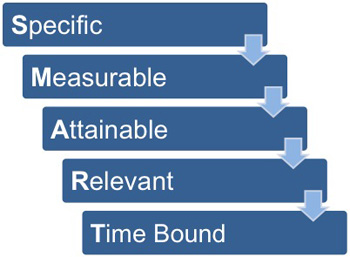 |
Specific
Very often, when you examine a particular goal, you will find that it can be broken down into separate, more specific goals. The first step in this process is to ask the five 'W' questions:
• What: What do I want to accomplish?
• Why: Specific reasons for accomplishing the goal.
• Who: Who is involved?
• Where: Identify a location.
• Which: Identify requirements and constraints.
In most cases only some of these will be relevant but you should mentally check through all of them to make sure that you are not missing anything.
For example, when considering the goal, 'Improve customer technical support enquiry processing' you should consider all of the following:
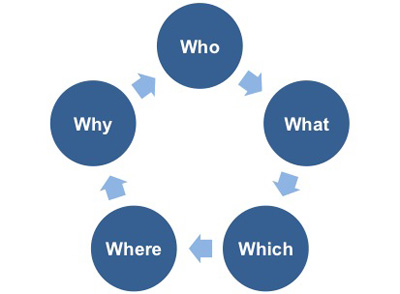 |
- What does 'improve' really mean; faster, more accurate, or some other measure?
- Why do we want to do this and what is the benefit to the organization?
- Who needs to take action and who will benefit as a result?
- Where will this be done?
- Which parts of the process will be affected?
In this example, you might decide that the biggest gains to the business will be achieved by reducing the time it takes for a customer to receive a return call from the relevant account manager.
You want to do this because some customers have been complaining about the time it takes to resolve technical issues. This information is appearing on Internet forums as well as user group meetings. You feel that it is damaging the reputation of the company.
Action could be taken at several points in the process and at several places; the initial customer training could be improved, the website technical support could be more comprehensive, or you could implement a better system for covering the absence of particular account managers, and so on.
In fact thinking in these terms might lead you to consider setting several more specific goals rather than one overarching one. For example:
- To extend initial customer training to include solutions to the five most frequent technical problems.
- To update the technical support area of the website within two hours of a new problem becoming apparent.
- To implement a formal and centralized system of covering the absence of account managers.
Each of these specific goals impacts on different people and different areas within the business. For example, Point 1 would involve the training department and the technical support department; Point 2 would involve the technical support department only; and Point 3 would involve the account managers and an administrator.
In this example, even though your own goal is 'to improve customer technical support enquiry processing' you have identified three separate tasks, which could be delegated once you have specified them more fully.
Measurable
The second term stresses the need for concrete criteria for measuring progress toward the attainment of the goal. The thought behind this is that if a goal is not measurable, it is not possible to know whether a team is making progress towards successful completion.
Measuring progress will help a team stay on track, reach its target dates, and experience the sense of achievement that spurs it on to the continued effort that is required to reach the goal. A measurable goal will usually answer questions such as:
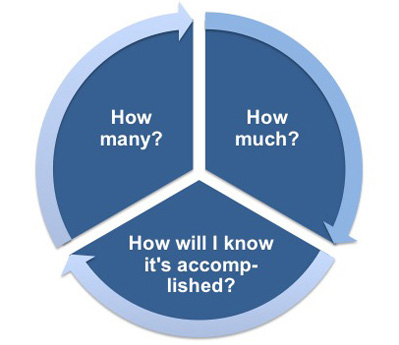 |
Whatever format best suits your particular goal will enable you to judge and assess your progress, as you move towards attaining it. It also gives you a real focus on what you have to achieve in certain timeframes, and offers you the opportunity to celebrate that achievement.
Using a measurement also allows a continual focal point for you as you work towards your goal, helping you to ascertain if the original deadline is still realistic. It is important to remain flexible throughout this process as often circumstances occur that you could not have foreseen.
Attainable or Achievable
There is little point in setting a goal that is either too difficult to achieve or beyond your capabilities, as this will only serve to de-motivate you and destroy your self-confidence. The importance of being able to accomplish a goal is equally vital when you are setting goals for others, as it is for yourself.
When setting a goal you must use your knowledge and current skills as a barometer for ensuring that the goal is 'attainable.'
Setting yourself a goal that is too easily fulfilled will leave you feeling cheated once it is attained. This is because you didn't feel sufficient, if any, 'challenge' was present in the process of accomplishing it. The more experience you have in setting your own goals, the more adept you will become at striking the necessary balance between your goal being challenging and it being attainable.
When setting 'attainable' goals in the workplace you must also ensure that sufficient resources are at your disposal and that your workload can accommodate this new requirement. If you are unable to alter either your resources or workload then you will need to alter your goal to a lower level, or address the resource constraint, so that your goal is achievable.
Relevant
Goals that are relevant to your boss, your team, and your organization will receive the needed support. A relevant goal can answer 'yes' to these questions:
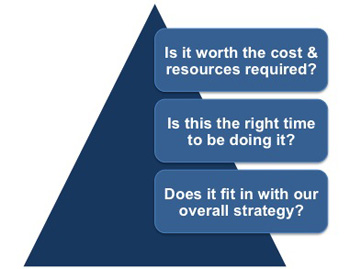 |
Relevant goals drive the team, department, and organization forward. A goal that supports or is in alignment with other goals would be considered a relevant goal.
It is careful analysis of what you want to achieve and where you wish to be that will determine the relevance of your goals. In the workplace, as part of this process, you will need to review any goal you establish against the organization's mission statement and your own personal objectives, as well as the role you perform.
You will also have to consider whether this goal is best suited to you and your role, or whether it would be more appropriate for it to be assigned to one of your team.
Any objective you set within the working environment should enhance a person's knowledge, skills, or attributes (KSA) in some way to bring them overall benefit in terms of their competencies and behaviors.
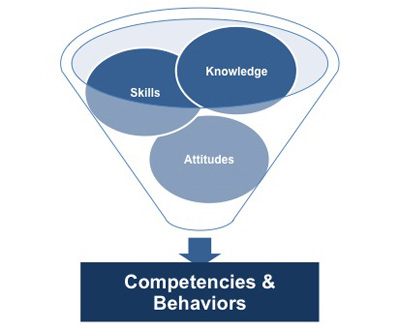 |
For example, consider the following: 'I want to understand how to manage a budget before the start of this financial year so that I can apply for a manager's role next year.'
A simple test to discover a goal's relevance can be judged by asking:
'If I don't accept this goal is there any detrimental effect on, or is an opportunity missed for, the organization or an individual?'
If the answer to this question is 'No' then there is no benefit to the goal or relevance and so it should be discarded so that you are not distracted from those goals that bring you a KSA benefit.
Time Bound
It is essential that goals have a timeframe or target date. A commitment to a deadline helps a team focus their efforts towards completion of the goal and prevents goals from being overtaken by other, unrelated routine tasks that may arise. A time-restrained goal is intended to establish a sense of urgency.
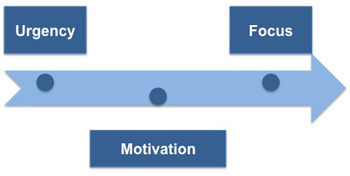 |
It is this aspect of using the SMART technique to decide upon a goal that brings it into focus and offers a challenge. A deadline forces you to concentrate your efforts with a degree of urgency so that you can celebrate your success when you accomplish the goal. The time restriction you impose provides the necessary impetus to keep you motivated to make things happen.
SMART Summary
Being able to recognize when you have achieved your goal is the sign that you have a set a SMART goal that matches all the five aspects it requires. Clear goals are also extremely useful tools in assisting you in motivating and informing other individuals who may help you to achieve your goal. Indeed, it for this reason that sharing your goals, especially in the workplace, is highly advantageous and motivates and focuses not only yourself but others too.
In team or project environments, SMART goals are essential. The clarity of the goal, along with its defined measures and relevance to the project, ensure all members know exactly what is required of them and by when. With team goals it is the combinations of each person's KSAs that ensure that the project goal is accomplished.
You may also be interested in:
Goal Setting for Managers | Goal Setting Theories of Locke and Latham | 4CF Goal Setting | Backwards Goal Setting | Prioritizing Personal Goals.



